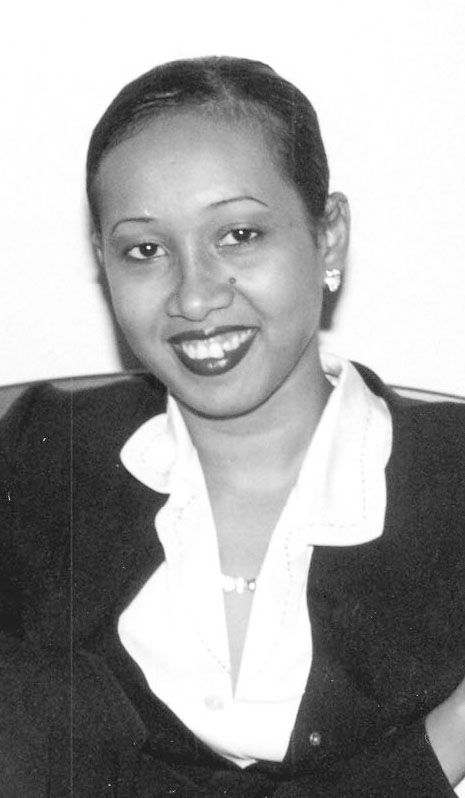
This lament has a history which goes beyond Guyana. As early as in the 1970s, the rapid rise of comic theatre in Jamaica was greeted with an outcry from a vocal community of critics against the explosion of slapstick and laughter and their bad influence upon a willing audience. There was a similar cold shoulder against the popular theatre that gradually seized centre stage in Trinidad and Tobago with the growing prosperity of the likes of Raymond Choo Kong. The intellectual community, among other good practitioners of “serious theatre,” disparaged the popular, the commercial and the comic.

But what truth is there in this disparaging judgment of the state of the contemporary theatre? How true is this theory of a universal decline, a killing off of good drama and a takeover by an inferior breed of popular entertainment? It is true that popular drama, moreso comic theatre, commands the box office and other brands of artistic drama will struggle to sell tickets. There have been periods of drought in good theatre in Guyana, but the matter demands serious study and greater understanding – particularly a better understanding of the comic and the popular. Generally, across the Caribbean, the laments about the manslaughter of good drama can evoke the response made by humourist Mark Twain when he heard that a newspaper had spread a public announcement of his demise: “Reports of my death are greatly exaggerated”.
The situation may be compared to the highly commercial theatre on Broadway in New York or the West End in London as against the more artistic experimentations off-Broadway and on the Fringe in London. While much of popular comedy is primarily commercial and bereft of true substance, comic theatre is not equal to bad theatre and not all that is popular is bad. Similarly, the claim that a play is “serious theatre” is no guarantee of quality.
The explosion of comedy in Jamaica in the 70s was also the rise of professional theatre in the Caribbean and a significant revolution in the audience, in Caribbean theatre generally. Something good was developing along with what was being denounced as deplorable. Theatre was becoming indigenised following a break with colonial trends and working class audiences were beginning to stream into the theatres. Furthermore, the highly artistic classics never attracted mass audiences from the beginning. But the good of it was that the less privileged of society was at last beginning to enjoy theatre in the mainstream auditoria.
This was followed by the most exciting development of the art of Caribbean theatre arising from infinite mixes of scribal and traditional forms, classical and folk traditions. In the middle of that, popular theatre has its place and functions and the space it was beginning to occupy would have made sections of the middle class a little uncomfortable. In Guyana, while there were periods of worry and of indifferent standards on the stage, there have also been significant strides in theatre arts, particularly since the revival of drama festivals, and a good deal of local drama has commanded critical attention. One big problem has been that the severest critics of anything popular and comic have not seen that these forms can be really good contemporary theatre, because they never go to see them. They have made up their minds that everything beyond the 1970s is bad, and so condemn themselves by judging and dismissing that which they have never seen.

Theatre in the world, as in Guyana, has changed, and has been changing consistently since the classical era. The skeptics who live in a time warp, have denied themselves the opportunity of experiencing the interesting changes and the significant things that have been taking place on the popular stage. Note that it is not all exemplary, and sometimes the charge is valid that some plays pander to popular box office appeal before any claim to quality.
However, theatre has always been created for its audience, and that is the case with the popular comic theatre in contemporary Guyana. Take for instance, two recent productions – Neaz Subhan’s Choti Backoo and Maria Benschop’s Nothing to Laugh About. They were created for their audiences and tailored to suit. They represent some of the now popular developments, and the forms of comic theatre that take centre stage around the Caribbean.
There has been an overpowering wave of farce, slapstick, comedy and the style of the roots theatre that originated in Kingston, Jamaica. The outstanding popularity of these types, and the fact that they have survived unwaveringly in many countries for nearly four decades must say something about their place in a society where change is frequent and urgent.
Choti Backoo produced and directed by Subhan was in two parts. The first part was a tribute to Mohammad Rafi, Mukesh and Kishore Kumar, the great playback singers of India, who have been placed on the same hallowed platform as the queen of them all, Lata Mangeshkar. They are legends of the Bollywood films and their music has been a deep part of consciousness in Guyana for a very long time through the radio, the Bollywood movies and popular music. Their appeal in Guyana has been wide and the Indian Arrival Committee staged that show to honour them through the performance of several selections of the songs they made popular.
The second part was a play titled Choti Backoo. written and directed by Subhan. Presenting comedy, farce and satire, its performance form trended towards roots theatre, though it was not as extreme, since it remained within normal boundaries of mainstream drama and betrayed pretensions of wanting to be there. It demonstrated the style of acting performance to fit its type, while it definitely wanted to be social commentary.
The play juxtaposed a rural Guyanese Indian peasant setting with the world of modern technology. It presented contrasts and balances with comparisons of the past and present as affected by the advance of technology. The play leaned towards pastoral drama – extoling the virtues of the old peasant life against the evils of the present ultra-technological age. There was a middle aged couple played by Paul Budhna and Nirmala Narine, the husband being the pastoral type, set in his ways and trumpeting the cause of the past golden age when people worked and used their brains as compared to the present over-dependence on cell phones, computers and machines.
The hero was excellently portrayed by Budhna in a very believable way. While he was matched by Narine, the production did not quite help her to be convincing as a middle aged woman in costume or make-up, making her hardly distinguishable from her daughter-in-law played by Narda Mohamed. Nevertheless, both Budhna and Narine understood farce and executed it well.
That was the pattern with all members of the cast including Chris Gopaul, whose performances are very sound in roles like this one; he seems to have found a niche.
Similarly, Michael Ignatius revelled in a role that has now become trademark for him. He has been regularly type-cast in this role and gave his audience what they expected.
Romel Edmonson also played to suit.
The play itself exploited as much laughter as it could conjure, despite being a bit repetitive. It went a trifle overboard in its pounding of the cell phone culture, which was telegraphed and obvious, but outstandingly provided the play with funny dramatic intrigues, especially the ending.
Overall Subhan presented a neat, hilarious and tightly directed comic drama.
Both Choti Backoo and Nothing To Laugh About toured the Guyanese countryside giving performances for town and village audiences. Interestingly, this is a tradition of roots theatre and popular comic forms, to which the latter belongs. Nothing To Laugh About has now firmly established itself as annual popular comic theatre. Its audience is guaranteed and it is currently the most popular dramatic offering in the local theatre.
This annual series has come a very long way since it started nine years ago. From the outset, it enjoyed mass popularity but has grown from being technically weak to its present position of strength. It is competent and firmly directed within the chosen style of theatre of its type. This is the form of roots theatre that has been developing in Guyana. Not many groups do it, but where it has been seen it represents a significant phenomenon. It is the form that the amateur drama group from Parika naturally adopted. It was also used by another group from Linden in the presentation of Pleasing Mrs Jones.
The style involves a very audience driven farce and slapstick in which stage action is knowingly prolonged to encourage audience delight. The scripts are workable, showing pronounced improvement and some have begun to use satire. However, while satire is now a part of the arsenal, these plays do not do well at political satire, as the pieces on local politics hardly succeed artistically. The other dramatic pieces work with some good content and very effective punch-lines.
Most of the actors seem part of a team well versed in the appropriate style of low comedy and low farce. While Guyanese audiences love comic performance and the actors are eager to accommodate them, knowledge of the form is often lacking. Comedy seems deceptively easy, but it is not a pushover. While there is no history of sound knowledge of comedy in Guyana, groups today seem to have learnt much about it and are more competent. This is evident in The Link Show and in Nothing To Laugh About. That is not surprising really, since it is the same set of actors who perform in both productions.
Benschop’s production has carved out its place on the Guyanese stage. It is a fixture on the calendar and joins the very intriguing development of a brand of roots theatre, with its important history in traditional theatre and vaudeville, on the mainstream stage. The multitudes who have now become part of theatre in the Caribbean continue to find inexhaustible delight in the hilarious and popular Nothing To Laugh About.





